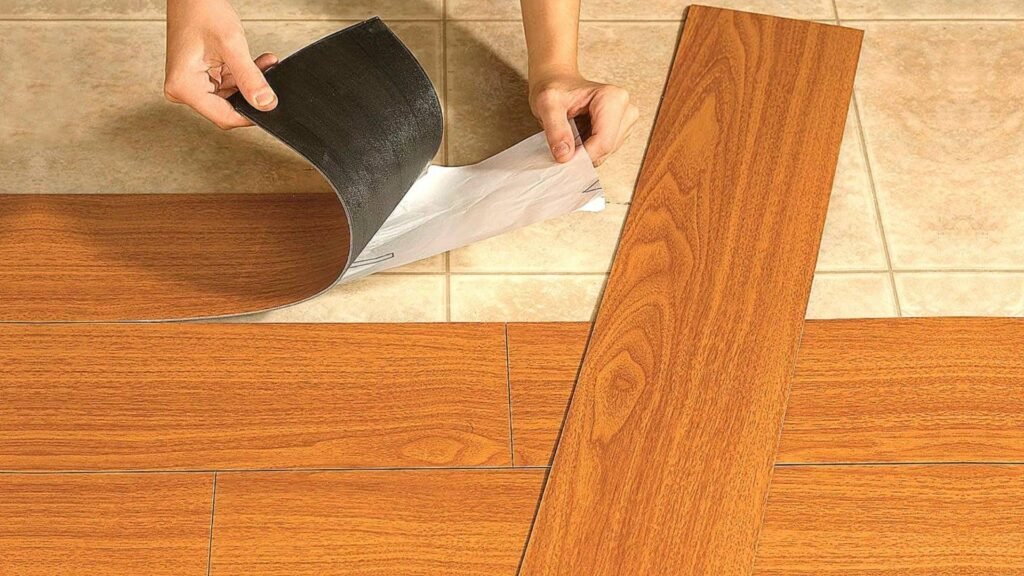Vinyl flooring is a popular choice for homeowners and businesses due to its durability, affordability, and versatility. Whether you’re installing vinyl floors in your kitchen, living room, or bathroom, it’s important to maintain and care for them properly to ensure they last for many years. By following a few simple steps, you can preserve the appearance and functionality of your vinyl flooring, keeping it in pristine condition.
1. Regular Cleaning is Essential
One of the simplest and most effective ways to maintain vinyl flooring is through regular cleaning. Dust, dirt, and debris can accumulate on the surface, causing scratches or dullness over time. To avoid this, sweep or vacuum the floor regularly using a soft-bristled broom or a vacuum with a floor setting designed for hard surfaces. This will remove any small particles that could scratch or damage the vinyl.
For a deeper clean, use a damp mop with a mild detergent solution. Avoid using harsh chemicals or abrasive cleaners, as these can damage the surface and cause discoloration. A gentle cleaner specifically designed for vinyl floors works best to maintain the finish and prevent buildup.
2. Address Spills Immediately
Accidents happen, and spills are bound to occur on your vinyl floors. However, it’s important to clean them up as soon as possible to prevent staining or sticky residue. Wipe up spills immediately using a clean, dry cloth or paper towel. For sticky substances like juice or syrup, use warm water and a mild dish soap to gently scrub the affected area.
Never allow spills to sit for long periods of time, as this can damage the surface and cause discoloration. Quick attention will keep your vinyl floors looking fresh and clean.
3. Protect the Surface from Scratches and Dents
Although vinyl flooring is designed to be durable, it’s still susceptible to scratches, dents, and scuffs, especially from heavy furniture or sharp objects. To protect your vinyl flooring from damage, consider placing furniture pads or felt protectors on the legs of chairs, tables, and other furniture pieces. These will reduce friction and prevent gouges from occurring.
Additionally, avoid dragging heavy furniture across the floor. When rearranging your furniture, lift it instead of sliding it to avoid unnecessary pressure on the surface. You can also use rugs or mats in high-traffic areas to provide an extra layer of protection against damage.
4. Prevent Fading with Sunlight Protection
Vinyl floors can fade over time if they are exposed to direct sunlight for prolonged periods. While vinyl is known for its color retention, UV rays can cause gradual fading, especially in darker-colored floors. To protect your vinyl flooring from sun damage, use curtains, blinds, or UV-protective window films to minimize exposure to direct sunlight.
If possible, rearrange furniture or rugs periodically to prevent certain areas from becoming overly exposed to sunlight. This helps to maintain the consistency of your floor’s color.
5. Use the Right Cleaning Tools
When cleaning vinyl floors, always use the right tools to avoid damaging the surface. Avoid using steel wool or rough scrubbing pads, as these can cause scratches and dull the finish. Opt for a soft microfiber mop or a mop with a soft cloth head to ensure a gentle, effective clean.
For stubborn stains, try using a vinyl floor cleaner or a mixture of warm water and vinegar. Apply the cleaner to the stain and let it sit for a few minutes before gently scrubbing with a soft cloth or sponge. Never use harsh chemicals like bleach or ammonia, as they can cause the vinyl to discolor or degrade over time.
6. Regular Maintenance and Inspections
In addition to cleaning, it’s important to perform regular inspections of your vinyl flooring to catch any issues early. Look for signs of wear and tear, such as bubbling, peeling, or lifting at the edges. If you notice any damage, it’s best to address it right away to prevent further deterioration. Most vinyl floors can be repaired by using a patching kit or adhesive, but it’s always a good idea to consult with a professional if you are unsure about the repair process.
Conclusion
Vinyl flooring is an excellent choice for both its aesthetic appeal and durability. By following these simple maintenance and care tips, you can extend the life of your vinyl floors and keep them looking as good as new. Regular cleaning, prompt attention to spills, protecting the surface from scratches, preventing sun damage, and using the right cleaning tools will ensure that your vinyl flooring remains beautiful and functional for many years to come.













































